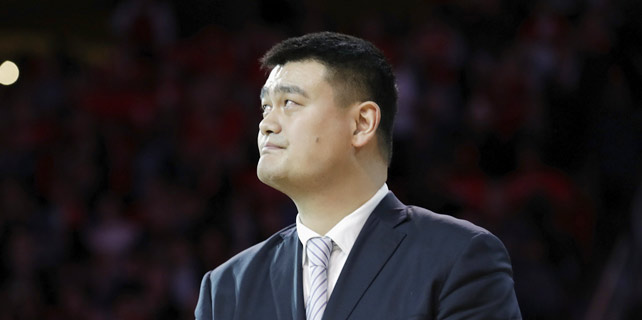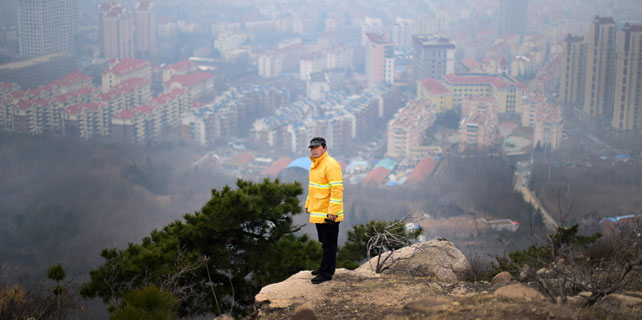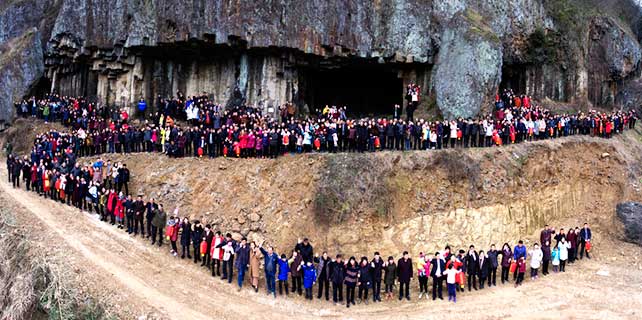China signals neutral monetary policy with rate hikes
BEIJING - On the first working day of the Year of the Rooster, China's central bank surprised financial markets by raising lending rates to banks, widely interpreted as a shift towards neutral monetary policy as economic fundamentals improve.
The People's Bank of China (PBOC) announced Friday, a 10 basis point rise in the interest rate of open-market operations through reverse repurchase agreements.
The central bank also increased interest rates on standing lending facilities, another tool to support liquidity.
The rate hikes are regarded by analysts as flexible policy tools for the central bank to guard against financial risks and curb asset bubbles, as the economy stabilizes in an uncertain environment.
China reported 6.7 percent GDP growth in 2016, lower than in recent years but within the target range.
This year the government is classing its monetary policy as "neutral," while promising to better adjust the money supply to ensure stable liquidity and adapt to changes in monetary tools.
A note from Chinese investment bank CICC said the rate hikes were "a further signal of exit from monetary easing" and "a step to push forward financial deleveraging."
"A moderate increase in funding costs is essential to dampen the growth of broadly defined credit," said CICC.
In fear of further tightening, Chinese shares slipped Friday, with the benchmark Shanghai Composite Index closing 0.6 percent lower. The smaller Shenzhen Component Index closed 0.47 percent lower.
The PBOC already increased the rates of medium-term lending facilities by 10 basis points before the week-long Lunar New Year holiday, the first rise since the liquidity tool was introduced in 2014.
"Having accumulated ample policy ammunition, the central bank should better use different tools in the next step," Li Jianjun, an analyst with Bank of Kunlun, told Financial News, late January.
China has kept its monetary policy stable since 2011, according to Zhang Xiaohui, the PBOC assistant governor, who admitted that there had been looseness due to economic downward pressure and fluctuations in the financial market.
In an article published on China Finance, a PBOC-run financial magazine, Zhang said that China should keep its monetary policy prudent and stable, appropriately expand aggregate demand to avoid an overly-rapid economic slowdown and at the same time refrain from excessive money supply to prevent bubbles.
China's over-reliance on credit expansion to support growth in past years has pushed up leverage ratios in many sectors and triggered excessive growth in property prices, causing bubbles and risks.
Zhang stressed that with China's serious economic structural issues, rising inflationary pressure and serious asset bubbles in some sectors, monetary policy needed to be more neutral and prudent, and be able to strike a balance between stabilizing growth and preventing risks.
"This will create a more favorable monetary environment and buy time and space for China to promote its supply-side structural reform," she added.
China's consumer price index, a main gauge of inflation, in December increased 2.1 percent year on year. But producer prices rose 5.5 percent year on year, the highest in more than five years, fanning inflation expectations.
However, analysts said policymakers would take a gradual approach, and did not expect benchmark deposit and lending rates to be adjusted in the near future, in view of both internal and external uncertainties in China's economy.
"Considering the seasonal decline in funding demand, the lending binge of banks at the start of the year, and increased inflation expectations, the PBOC may continue to drain liquidity via open market operations in the short term," said CICC.
China has kept its benchmark one-year lending rate at 4.35 percent since its last cut in October 2015.








